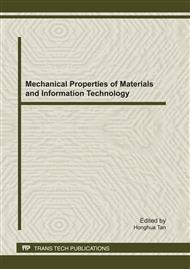p.173
p.177
p.181
p.187
p.192
p.197
p.202
p.209
p.215
Research on the Concurrency Control Communications Protocol in BioMedical Information Service System
Abstract:
In allusion to the transaction trait of the object-oriented mobile real-time database in the biomedical information service system, the new concurrency control communications protocol (PAI-OM-2PL) is put up with the fusion of common object two stages lock protocol (2PL) and concurrency control communications protocol (PAI-2PL) of traditional mobile real-time nested transaction. The aim of proposing this new communications protocol in the biomedical information service system is to give full play to transaction semanteme, can earlier release lock with using open nested transaction model. The performance of PAI-OM-2PL was tested on the object-oriented database (db4o) in the biomedical information service system, at the same time we simulate mobile computing setting. The result is that the performance is enhanced by using the new communications protocol in some surroundings.
Info:
Periodical:
Pages:
192-196
Citation:
Online since:
September 2011
Authors:
Price:
Сopyright:
© 2012 Trans Tech Publications Ltd. All Rights Reserved
Share:
Citation:


